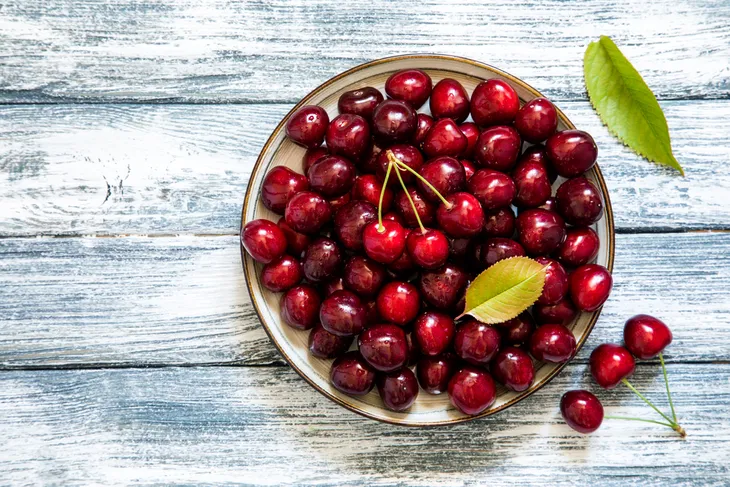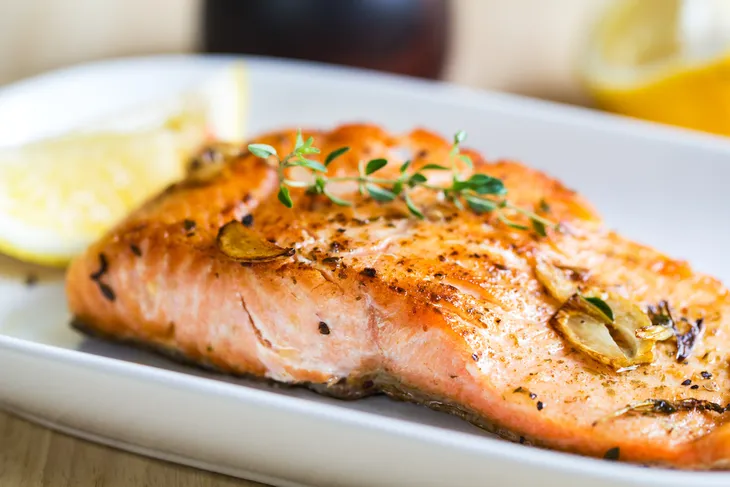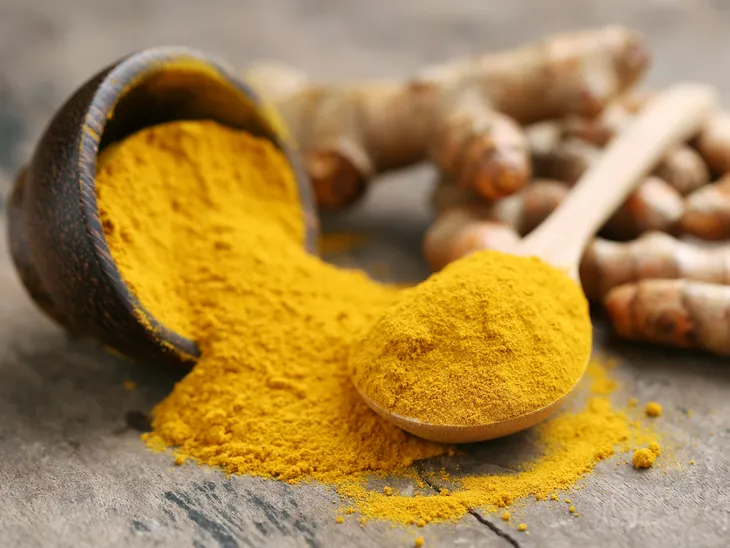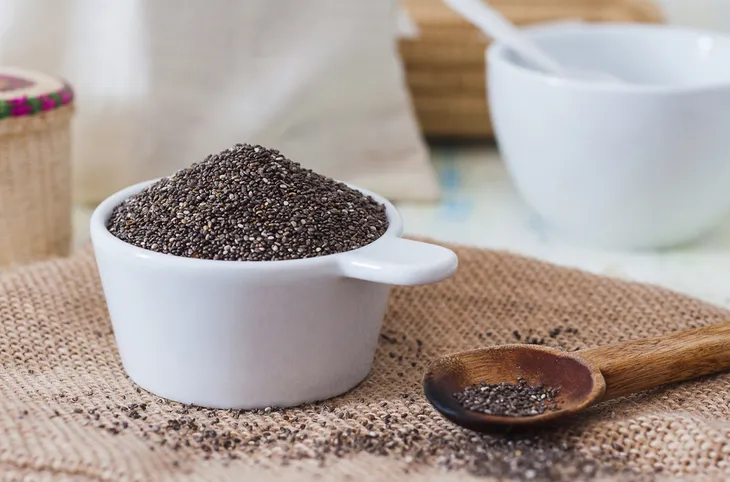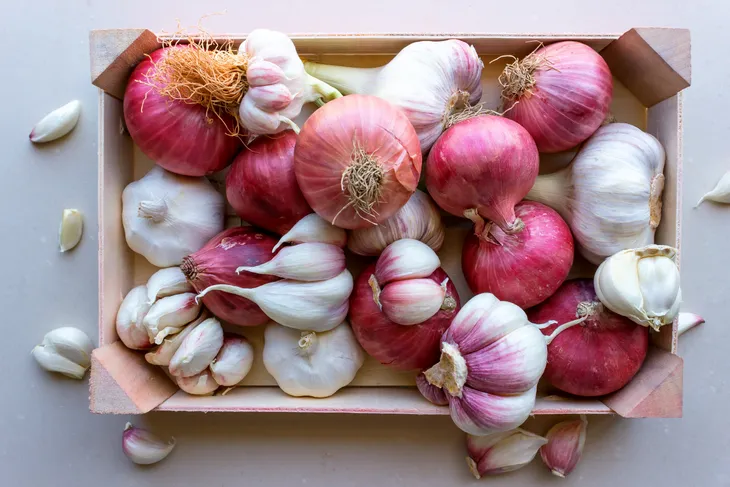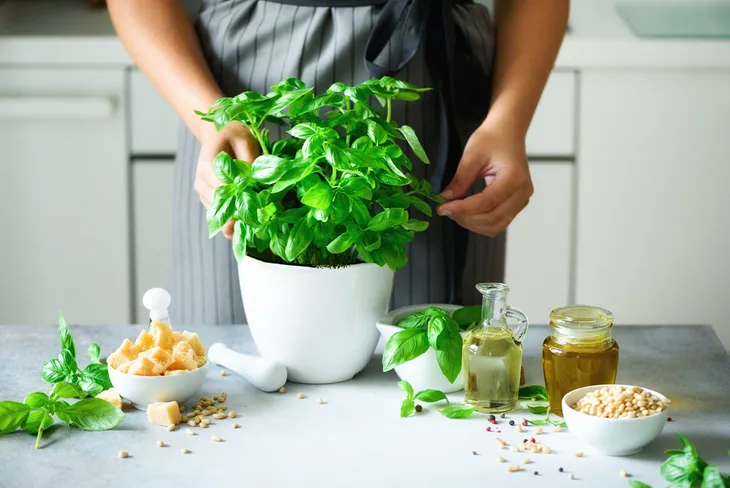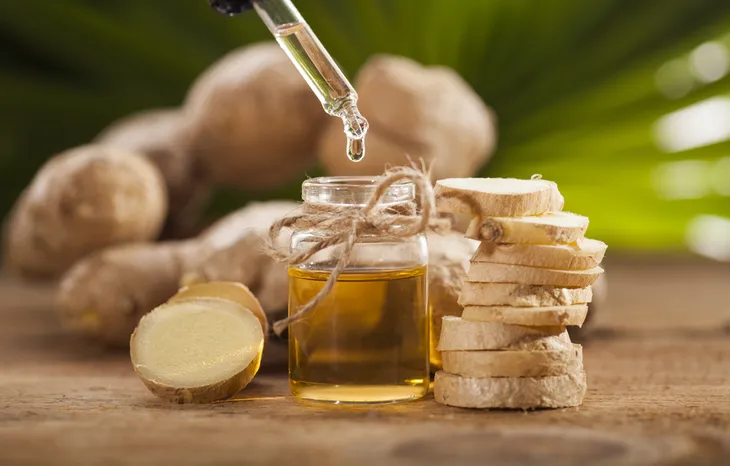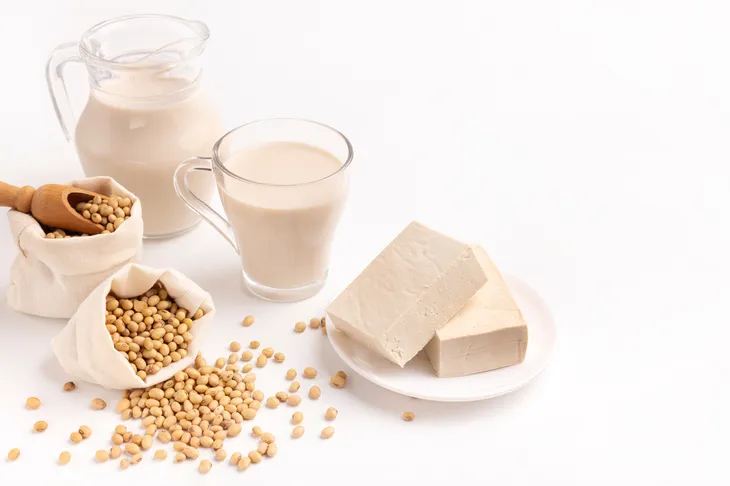A joint is where two or more bones come together. They can be rigid like in our skull, or moveable, like our knees. Joints are essentially pockets filled with a liquid known as synovial fluid, which “cushions and nourishes your cartilage,” says Runner’s World, allowing the bones to move over and around one another.
As a result of factors like age, genetics, and diet, cartilage can break down and synovial fluid can become clogged, causing inflammation and joint pain. Fortunately, you can help to slow down the effects of these factors by including more of these 14 joint healthy foods into your diet.
Cherries
While cherries are delicious, it’s not the fruits themselves that are beneficial for joint health. Cherries get their deep red color from anthocyanins, natural plant chemicals that have been shown to reduce inflammation.
As an alternative option to eating the fruit, you can drink cherry juice. Referencing a 2012 study done by the Oregon Health & Science University, Health.com indicates that “Drinking two cups of tart cherry juice daily reduced inflammation in the body, helping ease OA [osteoarthritis] symptoms.”
Red Peppers
Vitamin C is a crucial nutrient for joint health, and red peppers are chock-full of it! While all bell peppers contain the vitamin, the red variety is an especially good source. Why is vitamin C so important for your joints? Because it “helps your body make collagen, which is part of your cartilage, tendons, and ligaments that cushion your joints and hold them together,” says WebMD.
Sunwarrior.com adds that vitamin C has also been found to reduce pain, as does capsaicin, which red peppers offer a small amount of, along with vitamins A and K, and “phytonutrients that act as antioxidants.”
Fatty Fish
Fatty fish—such as salmon, mackerel, and sardines—are especially beneficial for joint health due to being rich sources of omega-3 fatty acids, “which help reduce joint pain and stiffness by suppressing the production of enzymes that erode cartilage and proteins that regulate inflammation,” says Brian D. Golden, M.D., clinical associate professor of rheumatology at NYU Langone Medical Center, in speaking with Men’s Fitness.
Salmon, in particular, is also an excellent source of calcium and vitamin D, which help to maintain bone strength. And while buying it fresh is generally best, TheHeartySoul.com indicates that “…for the purposes of your joints, it won’t matter whether you get salmon from a can or not.”
Turmeric
Turmeric is all the rage these days, and for good reason! When it comes to joint health, this superfood contains curcumin, which Nature’s Way says is “a potent anti-inflammatory ingredient.”
In fact, WebMD cites, “One study found that a curcumin extract worked as well as ibuprofen at easing knee aches and pains.” A staple ingredient in curries, the Food Network indicates it can also be used in “soups, smoothies and vegetable dishes.”
Nuts
Like fatty fish, nuts are excellent sources of inflammation-fighting omega-3 fatty acids. Almonds, for instance, also contain vitamin E and manganese. According to Sunwarrior.com, vitamin E is “an antioxidant that protects the body from damage,” while manganese “helps glucosamine work quicker and more effectively as it repairs joints.”
It’s important to note, however, that nuts tend to be quite high in fat, so be sure to limit your consumption to about a handful per day. Try eating them on their own as a snack, or added to salads and oatmeal.
Chia Seeds
Ch-ch-ch-chia! Is there anything these small, but mighty seeds aren’t beneficial for? In addition to being excellent sources of omega-3 fatty acids—which are beneficial for reducing joint pain and inflammation—they also contain “essential amino acids the body needs to repair muscle, ligaments, tendons, and cartilage,” says Sunwarrior.com.
And that’s not all! Chia seeds are also rich in nutrients like fiber and protein. Try adding them to smoothies, oatmeal, baked goods, or pasta sauces for a beneficial boost to your joint health!
Leafy Greens
When it comes to joint health, it’s important to eat your greens! Spinach, kale, collard green, or bok choy—the choice is yours! They’re all moderately high in essential nutrients like vitamin C, calcium, and selenium.
As mentioned previously, vitamin C is beneficial as it helps to cushion the joints by maintaining cartilage function. Selenium, on the other hand, is believed to help joints due to its “antioxidant properties that protect against damage and play a critical role in producing new cells,” says LiveStrong.
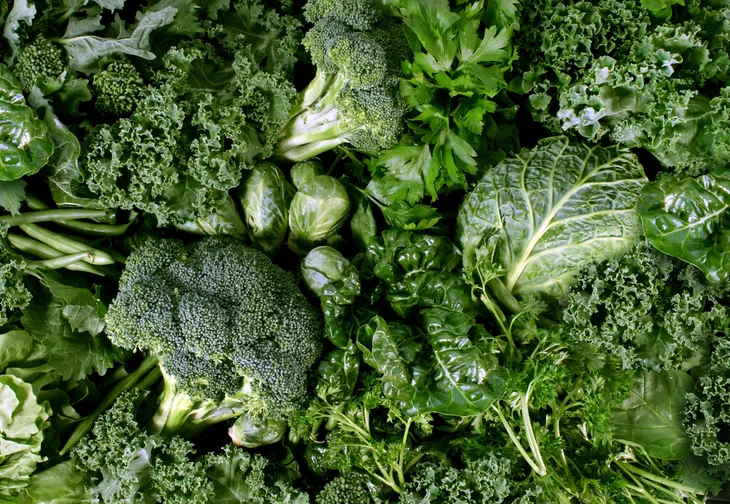 Shutterstock/Lightspring
Shutterstock/LightspringBerries
Speaking of antioxidants, berries—like blueberries, strawberries, raspberries, and blackberries—are among the richest sources of them. Particularly inflammation-fighting ones called anthocyanins, which “give the fruit its deep, rich hue,” says Natalie Azar, M.D., clinical assistant professor of rheumatology at NYU Langone Medical Center, in speaking with Men’s Fitness.
The source adds that berries also contain ellagic acid, “another antioxidant that helps decrease inflammation that exacerbates joint pain.” To up your intake, try snacking on a handful, adding them to smoothies, or using them as a topper for oatmeal and yogurt.
Red Apples
Remember anthocyanins, the natural plant chemicals we mentioned earlier that give cherries their red color? They’re also found in the skin of red apples, and are powerful at fighting inflammation.
Red apples are also a rich source of an antioxidant called quercetin, which TheHeartySoul.com says is “used in the formation of collagen.” Additionally, the source says that apples contain plenty of magnesium, “one of the nutrients capable of promoting the formation of hyaluronic acid”—a critical component of the synovial fluid found in our joints, which can break down over time.
Garlic and Onions
Not only are garlic and onions related, Sunwarrior.com says they both “contain a powerful sulfur compound that fights inflammation and pain.” On top of that, the source says, ”They help flavor food so we can use less sodium,” overconsumption of which has been associated with high blood pressure and arthritis.
Onions, in particular, are also a valuable source of quercetin, as well as prebiotic fiber, “food that probiotics need to absorb the nutrients you’re taking in, and deliver them to your joints,” indicates the Food Network.
Basil
According to Men’s Fitness, basil “has been used in India and Europe for centuries to treat inflammation and joint pain.” This is because it contains an enzyme called eugenol, which, in addition to giving the herb its fragrant scent, is “a strong anti-inflammatory that suppresses the activity of cyclooxygenase—the enzyme that forms the lipid mediators that cause inflammatory responses in the body,” says Brian D. Golden, M.D., in an interview with the publication.
In order to get the most benefit, the source recommends using a type called holy basil, which can be used to make pesto, or added—either fresh or dry—to soups, salads, and pastas.
Extra Virgin Olive Oil
Extra virgin olive oil, oftentimes referred to as EVOO, is not only a versatile kitchen staple, but is also highly beneficial for joint health. It offers a valuable amount of lubricin, “a protein that improves the ability of synovial fluid to both protect the surrounding cartilage and serves as a lubricant,” says TheHeartySoul.com.
EVOO is also a rich source of antioxidants, omega-3 fatty acids, and oleocanthal—a natural phenolic compound that the Food Network indicates has shown “to have some similar effects as some anti-inflammatory drugs.” Try adding it to salads and pastas, as well as using it to sauté vegetables.
Ginger
Like basil, ginger has been used as an anti-inflammatory for many thousands of years. Although it is traditionally used to treat stomach aches and indigestion, ginger also “eases joint pain by blocking several genes and enzymes that promote inflammation and discomfort,” says Brian D. Golden, M.D., to Men’s Fitness.
As ginger and turmeric are related, Sunwarrior.com says it “carries many of the same anti-inflammatory and pain fighting properties.” The two foods also go well together in curries, but ginger is also delicious on its own in stir-frys, tea, and fresh juices.
Soy
In addition to being an excellent source of plant-based protein, soy is also a great for boosting joint health. TheHeartySoul.com explains that this is because soy “contains estrogen, which in turn affects the production of hyaluronic acid—one of the key components of synovial fluid.”
It also offers a healthy amount of omega-3 fatty acids, which are beneficial for reducing joint pain and inflammation. Soy can be consumed in a variety of different forms, including tofu, edamame, tempeh, and soy milk, but be sure to look out for the organic, non-GMO variety.

